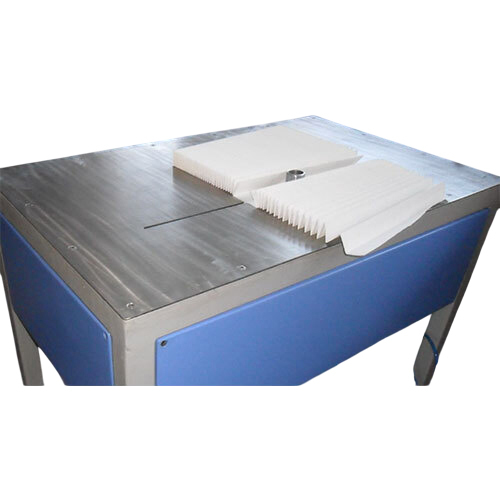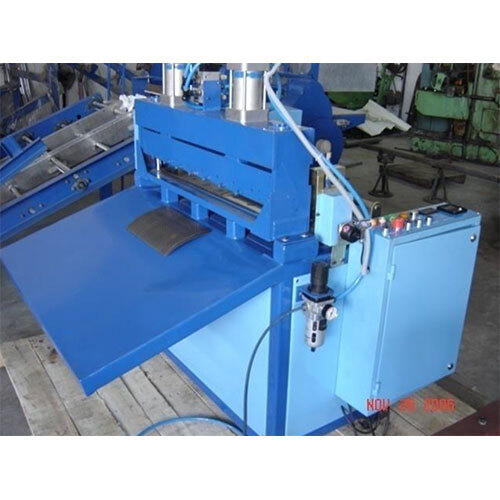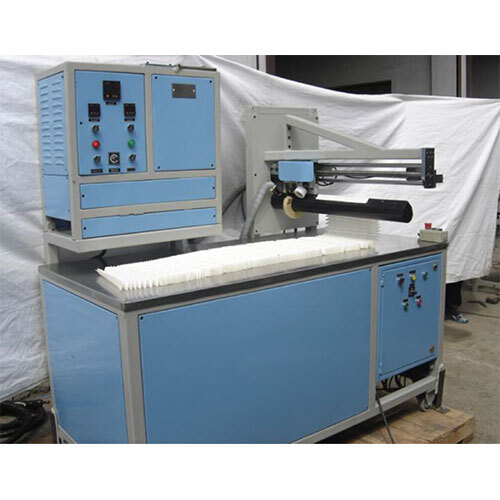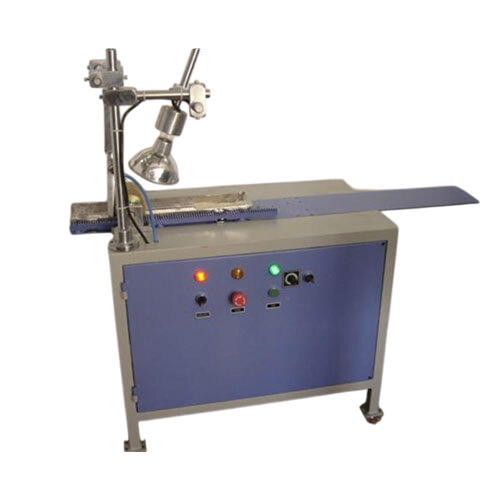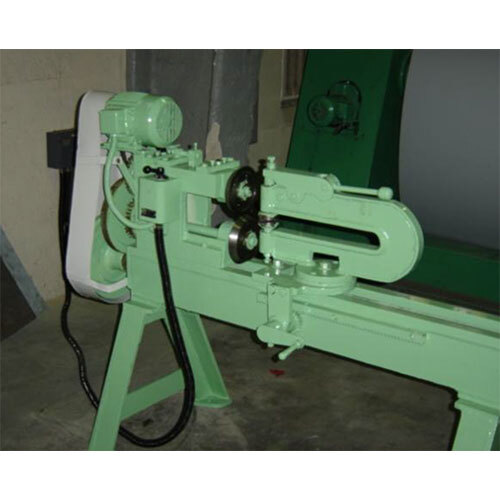Paper pleat edge cutting machine
Product Details:
- Control System Fully Automatic
- Frequency 50 Hertz (HZ)
- Machine Type Paper pleat edge cutting machine
- Voltage 220 Volt (v)
- Power Source Electricity
- Operating Type Automatic
- Surface Treatment Painted
- Click to View more
Paper pleat edge cutting machine Price And Quantity
- 775000.0 INR/Piece
- 1 Piece
Paper pleat edge cutting machine Product Specifications
- Fully Automatic
- 220 Volt (v)
- Automatic
- 12 Months
- Electricity
- Industrial
- Blue
- 50 Hertz (HZ)
- Painted
- Paper pleat edge cutting machine
Paper pleat edge cutting machine Trade Information
- GURUGRAM
- Cash Advance (CA)
- 10 Piece Per Month
- 1 Week
- Contact us for information regarding our sample policy
- Asia
- All India
Product Description
A Paper Pleat Edge Cutting Machine is a specialized machine used in the production of pleated paper or filter media, specifically for cutting the edges of pleated paper after it has been formed into accordion-like folds. This machine ensures that the pleated paper has smooth, precise, and clean edges, which are essential for the subsequent steps in filter manufacturing or other applications where pleated paper is used.
Heres a detailed description of a Paper Pleat Edge Cutting Machine:
Purpose of the Paper Pleat Edge Cutting Machine
The primary purpose of this machine is to cut the edges of pleated paper after it has been pleated, ensuring that the edges are uniform and free from any jagged or uneven parts. This is especially important in industries like filter manufacturing, packaging, and automotive air filters, where precise dimensions are critical for the end product to fit into frames, air filtration systems, or other devices.
Key Features of a Paper Pleat Edge Cutting Machine
-
Edge Cutting Mechanism:
- The machine features a cutting mechanism that trims the edges of the pleated paper into precise shapes. The cutting is often done using rotary cutters, guillotine blades, or laser cutting systems. This ensures a clean cut without damaging the pleated paper or disrupting its accordion structure.
- The cutting can be done on both the leading and trailing edges of the pleated paper.
-
Adjustable Cutting Width:
- The cutting machine typically allows for adjustable cutting widths, ensuring the operator can modify the amount of material to be removed from the edges of the pleated paper. This is useful when producing pleats of varying sizes and shapes for different applications.
-
High Precision:
- Precision is essential in pleated paper production, as any irregularity in the edge cutting can affect the overall quality of the pleats. The edge cutting machine ensures consistent and accurate cuts, allowing for tight tolerances in filter or packaging dimensions.
-
Automatic Feeding System:
- Automatic feeding systems are commonly integrated into these machines, enabling continuous feeding of pleated paper into the cutting area. This automation improves efficiency and minimizes human intervention, ensuring smoother and more consistent operation.
-
Speed Control:
- The machine often comes with variable speed control, allowing the operator to adjust the speed at which the pleated paper is fed through the cutting station. The speed control helps to optimize the cutting process depending on the thickness and material of the paper.
-
Edge Sealing (Optional):
- Some machines also offer the option of sealing the edges of the pleated paper after cutting to prevent fraying or damage. This feature may involve an additional heat sealing process or adhesive application to strengthen the edges of the pleats.
-
Cutting Blade or Tool Material:
- The cutting blades or tools are typically made from durable, high-quality materials (such as hardened steel or carbide) to ensure long-lasting performance and resistance to wear, especially when dealing with thicker or tougher paper materials.
-
Dust Collection System:
- A dust collection system is often integrated into the machine to collect any dust or particles generated during the cutting process. This helps maintain a clean working environment and ensures the pleated paper remains free of contaminants.
-
Safety Features:
- Safety features such as emergency stop buttons, guarding around moving parts, and safety interlocks are standard on these machines to protect the operator from injury during operation.
Applications of Paper Pleat Edge Cutting Machines
-
HEPA Filter Manufacturing:
- In HEPA filter production, after the pleated paper is formed, the edges must be precisely cut to fit into frames. The edge cutting machine ensures that the pleats are ready for assembly into high-efficiency filters used in air purification systems, clean rooms, and medical environments.
-
Air Filter Production:
- In the production of automotive, industrial, or HVAC air filters, pleated paper is used as the core filtering media. Cutting the edges precisely ensures that the pleated paper fits into the filter housing and maintains its structural integrity.
-
Packaging Industry:
- Pleated paper is also used in packaging, particularly in products where an accordion-like structure is necessary for shock absorption or protective packaging. Edge cutting is needed to ensure a clean, uniform shape that fits into specific packaging designs.
-
Insulation Materials:
- In some insulation applications, pleated paper or materials are used to enhance surface area and thermal resistance. Cutting the edges properly helps in preparing the material for its final use in construction or industrial applications.
-
Craft and Decorative Items:
- In some decorative industries, pleated paper is used in crafting, card making, or for creating folded paper designs. The edge cutting machine can be used to give the paper a precise and polished finish for such artistic applications.
Advantages of Using a Paper Pleat Edge Cutting Machine
-
Precision Cutting:
- The machine ensures that the edges of the pleated paper are cut with high precision, which is crucial for ensuring uniformity in the final product, especially in sensitive applications like air filtration.
-
Increased Efficiency:
- Automation reduces the need for manual cutting, speeding up production and reducing labor costs. The continuous feeding system ensures that large volumes of pleated paper can be processed quickly.
-
Improved Product Quality:
- Clean, precise cuts reduce the risk of damage to the pleated paper, resulting in better-quality products that perform efficiently in their respective applications (e.g., HEPA filters, packaging, etc.).
-
Customization:
- Adjustable settings, such as cutting width and speed control, allow for flexibility in producing pleated paper with varying requirements, making the machine adaptable to different manufacturing needs.
-
Reduced Waste:
- The precision of the cutting system reduces material wastage, as only the required amount of paper is trimmed, making the production process more efficient and cost-effective.

Price:
- 50
- 100
- 200
- 250
- 500
- 1000+

 English
English Spanish
Spanish French
French German
German Italian
Italian Chinese (Simplified)
Chinese (Simplified) Japanese
Japanese Korean
Korean Arabic
Arabic Portuguese
Portuguese
